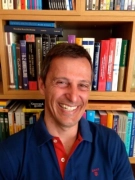 14/03/2024, 18:45 — 19:00 — Sala P3.10, Pavilhão de Matemática Online
14/03/2024, 18:45 — 19:00 — Sala P3.10, Pavilhão de Matemática Online
Ricardo Schiappa, Instituto Superior Técnico
Resurgence, random matrices, and strings
Some of the deepest mysteries in modern Fundamental Physics pertain to the nature of gravity in the quantum regime — most notably, how to describe quantum black holes and a quantum universe. As in previous revolutions (recall the role of Riemannian Geometry in the formulation of General Relativity, or the role of Hilbert Spaces and Operator Algebras in the formulations of Quantum Mechanics and Field Theory) new Mathematics may be required to tackle these challenges. One possibility to move forward is via the use of Resurgence and Random Matrices, mathematical tools that allow us to describe the average quantum behavior of chaotic, many-body, astrophysical and cosmological systems, far beyond small perturbations — and into the heart of their full fledged nonlinear behaviors. Exact mathematical solutions to many such problems may be obtained via the use of String Theory, in this way providing a first mathematical glimpse into a tentative new revolution in our physical understanding of the Universe.
A Master Thesis in these topics will first review the general state-of-the-art, and then focus on one of the many subtopics in these fields according to the student preferences.
Ver também
18H45_RS.pdf
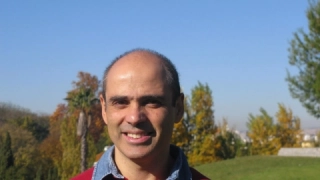 14/03/2024, 18:30 — 18:45 — Sala P3.10, Pavilhão de Matemática Online
14/03/2024, 18:30 — 18:45 — Sala P3.10, Pavilhão de Matemática Online
José Natário, Instituto Superior Técnico
Mathematics of waves and black holes
The wave equation is a partial differential equation describing continuous phenomena which propagate with a characteristic speed, such as sound, light, or gravitational waves. In this project you will study the behavior of the solutions of this equation in the curved spacetime geometry around a black hole, which is essential to understand the stability properties of these remarkable astrophysical objects.
Ver também
18H30_JN.pdf
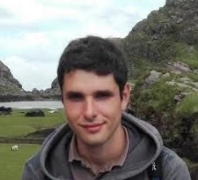 14/03/2024, 18:00 — 18:15 — Online
14/03/2024, 18:00 — 18:15 — Online
Simão Correia, Instituto Superior Técnico
Vortex filaments, the binormal flow and the nonlinear Schrödinger equation
In fluid mechanics, vortex filaments model the evolution of thin tubes with high vorticity. In a first-order approximation, the trajectory of the filament satisfies the binormal flow. Through the Hasimoto transform, the evolution can be reduced to the 1D cubic nonlinear Schrödinger equation. This project focuses on the relation between the geometry of the filament and the qualitative properties of the Schrödinger equation.
Ver também
18H00_SC.pdf
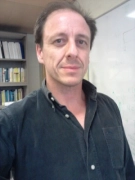 14/03/2024, 17:45 — 18:00 — Online
14/03/2024, 17:45 — 18:00 — Online
Jorge Silva, Instituto Superior Técnico
Convergence of Fourier series and transforms
At the beginning of the 19th century, Fourier revolutionized mathematical analysis by stating, despite the absence of a really rigorous proof, that functions could be represented by trigonometric series, which now carry his name. But up until the first half of the 1960's, when Yuri Gagarin had already orbited the Earth in a spacecraft, and the Beatles and Rolling Stones were global rock superstars, it was still not known whether or not there even existed continuous functions whose Fourier series were everywhere divergent. The first serious proof of convergence of Fourier series is due to Dirichlet, for piecewise monotone functions, soon after Fourier published his famous "Théorie Analytique da la Chaleur" in 1822, starting a surprising and far-reaching history of discoveries and results, that culminated in Lennart Carleson's 1966 proof of the almost everywhere pointwise convergence of Fourier series for $L^2$ functions (including, in particular, continuous functions), known as Lusin's conjecture, that had been an open problem since 1912, when it was first proposed.
In this short presentation, I will give a brief overview of the history of the convergence problems for Fourier series and transforms, and then focus on the problem of weak boundedness of the Carleson operator (which implies the pointwise almost everywhere convergence of Fourier series) by using the modern time-frequency methods of Lacey-Thiele, first used in the 1997 proof of boundedness of the bilinear Hilbert transform, whose study would be a possible topic for a master's thesis.
Ver também
17H45_JDS.pdf
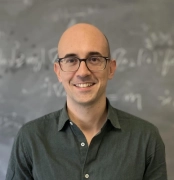 14/03/2024, 17:30 — 17:45 — Sala P3.10, Pavilhão de Matemática Online
14/03/2024, 17:30 — 17:45 — Sala P3.10, Pavilhão de Matemática Online
Hugo Tavares, Instituto Superior Técnico
Optimizing shapes and partitions
We are used to minimize functions depending on real variables. But, in many situations, real life situations correspond to minimizing functions of ... shapes. How and why should we do it? We will explore several examples and see some recent results and open problems, both on Euclidean spaces and on metric graphs. This offers the possibility of a thesis in the topic of Mathematical Analysis & PDE and/or Numerical Analysis.
Ver também
17H30_HT.pdf
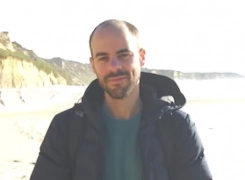 14/03/2024, 16:00 — 16:15 — Sala P3.10, Pavilhão de Matemática Online
14/03/2024, 16:00 — 16:15 — Sala P3.10, Pavilhão de Matemática Online
Pedro Boavida, Instituto Superior Técnico
Kontsevich integrals and points
In the late 1950s, Smale proved that the inclusion of the group of isometries of the $S^2$ sphere in the group of diffeomorphisms is a homotopy equivalence, and asked whether this would be true for higher-dimensional spheres. In the 1980s, Hatcher confirmed Smale's suspicion for the 3-sphere, but the 4-dimensional case remained open until recently.
Ver também
16H00_PB_h.pdf
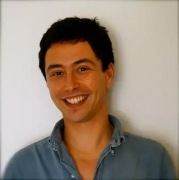 14/03/2024, 15:45 — 16:00 — Sala P3.10, Pavilhão de Matemática Online
14/03/2024, 15:45 — 16:00 — Sala P3.10, Pavilhão de Matemática Online
Diogo Oliveira e Silva, Instituto Superior Técnico
The Sphere Packing Problem
The sphere packing problem asks for the densest packing of congruent solid spheres in d-dimensional Euclidean space. Until recently, optimal sphere packings were only known in dimensions 1, 2 and 3. On March 14, 2016, Maryna Viazovska announced a proof in dimension $d=8$ which stirred the world of mathematics.
The aim of this talk is to introduce the sphere packing problem and to describe some of the analytic tools that have led to progress in the field.
Ver também
15H45_DOS_h.pdf
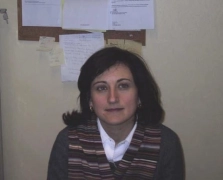 14/03/2024, 15:30 — 15:45 — Sala P3.10, Pavilhão de Matemática Online
14/03/2024, 15:30 — 15:45 — Sala P3.10, Pavilhão de Matemática Online
Leonor Godinho, Instituto Superior Técnico
Hamiltonian actions on symplectic manifolds
We will see examples of symmetries in symplectic manifolds with special properties and their connection to combinatorics.
Ver também
15H30_LG.pdf
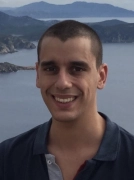 14/03/2024, 15:00 — 15:15 — Sala P3.10, Pavilhão de Matemática Online
14/03/2024, 15:00 — 15:15 — Sala P3.10, Pavilhão de Matemática Online
Diogo Poças, Instituto Superior Técnico
Equilibria computation in algorithmic game theory
Many problems in computer science inherently involve interactions between multiple self-interested agents. The behaviour of such systems can be rigorously modeled using tools from game theory. A concrete question is the problem of determining whether a given system has an equilibrium (a situation in which no agent benefits from changing her strategy) and how to find such an equilibrium. The topic of this dissertation proposal is the study of the computational complexity of decision and search problems regarding equilibria in certain families of games.
Ver também
15H00_DP.pdf
 14/03/2024, 14:45 — 15:00 — Sala P3.10, Pavilhão de Matemática Online
14/03/2024, 14:45 — 15:00 — Sala P3.10, Pavilhão de Matemática Online
Sérgio Marcelino, Instituto Superior Técnico
Infinite-Valued Logics and Applications
The growing developments of computer science and artificial intelligence, and their applications in critical areas, demand new formal methods (read logics) able to cope with the reasoning tasks involved in their analysis. To meet the needs of the applications it is fundamental to find balances between the expressivity of the considered logics and the complexity of their associated decision problems.
Many reasoning activities can be indirectly encoded into classically based logics and benefit from dedicated SAT- or SMT-solvers. However, this is not the only possible approach and non-classical logics provide a range of alternatives. For example, there are infinite-valued fuzzy logics, taking values in the real unit interval, whose computational complexity does not exceed the complexity of the propositional classical logic which is 2-valued. These logics are used to directly reason under ambiguity and uncertainty, and play an important role in many applied scenarios as in modern neuro-symbolic approaches to AI. We will discuss some possible dissertation topics combining the study of many-valued logics and their applications.
Ver também
14H45_SM_h.pdf
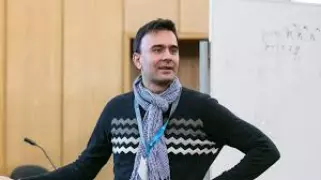 14/03/2024, 14:30 — 14:45 — Sala P3.10, Pavilhão de Matemática
14/03/2024, 14:30 — 14:45 — Sala P3.10, Pavilhão de Matemática
Paulo Mateus, Instituto Superior Técnico
Classical and Quantum Cryptography
The thesis delves into the introduction and analysis of new cryptographic protocols designed to tackle the challenges presented by quantum computing. These protocols utilize post-quantum cryptosystems or quantum channels. The range of protocols covers secure multiparty computation, coin tossing, oblivious transfer, and bit commitment, along with the utilization of physical unclonable functions. The research places a strong emphasis on universal composability, enabling a thorough assessment of the security guarantees of the protocols within a broader cryptographic context. Additionally, potential application scenarios such as blockchain signatures, smart contracts, lightweight, and energy-efficient cryptography are explored, particularly in situations where communication and computational complexity are significantly constrained.
Ver também
14H30_PM_shorter.pdf
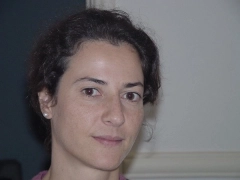 14/03/2024, 12:00 — 12:15 — Sala P3.10, Pavilhão de Matemática Online
14/03/2024, 12:00 — 12:15 — Sala P3.10, Pavilhão de Matemática Online
Ana Ferreira, Instituto Superior Técnico
Space-time extremes and applications to environmental data
The Maximum Domain of Attraction condition was the breakthrough result from which Extreme Value Theory - as a branch of Probability and Statistics - successfully evolved, providing a consistent way for extrapolating sample information to higher or lower values. In the one-dimensional case the procedure has been applied for describing extreme phenomena in many fields of knowledge. New challenges arise when extending the methods to higher dimensions. After introducing the elementary MDA condition, open problems of this thematic to address in a Master thesis will be illustrated.
Ver também
12H00_AF.pdf
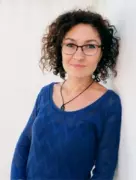 14/03/2024, 11:45 — 12:00 — Sala P3.10, Pavilhão de Matemática Online
14/03/2024, 11:45 — 12:00 — Sala P3.10, Pavilhão de Matemática Online
Erida Gjini, Instituto Superior Técnico
Population dynamics of infectious diseases
“Mathematics Is Biology's Next Microscope, Only Better; Biology Is Mathematics' Next Physics, Only Better” — this is a quote by Joel E. Cohen in an influential paper in 2004 where he talked about the explosive synergy happening and growing between biology and mathematics in recent years. These are exciting times to be an applied mathematician! My projects and research efforts aim to contribute to this biology-mathematics interface, in particular focusing on models in biomedicine, dynamics, control and prediction of infectious diseases. In my team, master projects can be developed to address: host-pathogen interaction in specific systems, the critical border between health and disease, epidemiological transmission dynamics, effects of heterogeneity, and interventions such as vaccines or antibiotics. The projects require integrated skills and techniques from different mathematical fields, including dynamical systems, ODEs, PDEs, probability and statistics, linear algebra and optimization, and often data analysis and numerical computation.
International collaborations are possible with teams in Portugal, France, USA, UK and the Netherlands.
Ver também
11H45_EG.pdf
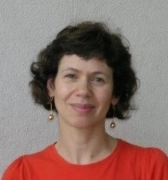 14/03/2024, 11:30 — 11:45 — Sala P3.10, Pavilhão de Matemática Online
14/03/2024, 11:30 — 11:45 — Sala P3.10, Pavilhão de Matemática Online
Rosário Oliveira, Instituto Superior Técnico
What is relevant and what is redundant?
Feature selection is recognized as an important preprocessing technique to reduce dimensionality and improve the performance of regression and classification tasks. The class of sequential forward feature selection methods based on Mutual Information is widely used, mainly due to its computational efficiency and independence from the specific classifier. In this talk, we present a theoretical framework for this class of methods which explains the existing proposals as approximations of an optimal target objective function, that quantifies redundancy, relevance, and irrelevance of the features for the classification problem.
Ver também
11H30_MROS.pdf
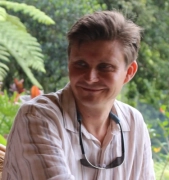 14/03/2024, 11:00 — 11:15 — Sala P3.10, Pavilhão de Matemática Online
14/03/2024, 11:00 — 11:15 — Sala P3.10, Pavilhão de Matemática Online
Juha Videman, Instituto Superior Técnico
Adaptive Finite Elements for Contact Problems
Contact problems are of great engineering interest and they occur in numerous areas of physics and mechanics, think, for example, of a contact between two elastic bodies. In mathematical terms, these problems are expressed as variational inequalities and most often approximated by the finite element method. However, because the contact region is normally not known in advance, it is difficult to approximate the problem accurately without resorting to an adaptive mesh refinement. Adaptive finite elements use less degrees-of-freedom than uniform meshes to achieve a given accuracy and whereas the convergence rate of the uniform strategy is limited by the regularity of the exact solution, the adaptive strategy successfully regains the optimal convergence rate. Here, we introduce some elementary ideas of adaptivity through a number of contact problems.
Ver também
11H00_JV.pdf
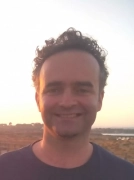 14/03/2024, 10:45 — 11:00 — Sala P3.10, Pavilhão de Matemática Online
14/03/2024, 10:45 — 11:00 — Sala P3.10, Pavilhão de Matemática Online
Jorge Tiago, Instituto Superior Técnico
Mathematics for blood flow simulations
Numerical simulations are now considered an important tool for better understanding the vascular system's physiopathology. Approximating the solution of PDE-based models can be successfully used to describe blood dynamics in large vessels, providing additional information not easily captured by clinical imaging techniques. In this presentation, we will introduce some fluid models that have been successfully applied to the study of cardiovascular diseases.
Ver também
10H45_JT.pdf
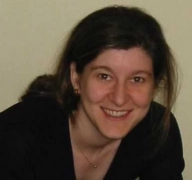 14/03/2024, 10:30 — 10:45 — Online
14/03/2024, 10:30 — 10:45 — Online
Ana Silvestre, Instituto Superior Técnico
Artificial boundary conditions for fluid flow simulation
When carrying out numerical simulations of fluid flows in very large or unbounded domains, for example, in physiological fluid mechanics, artificial boundaries have to be introduced in order to define or reduce the size of computational domains and lower the computational cost of the simulations.This motivates several theoretical and numerical studies of Navier-Stokes flows with open boundary conditions. We will address the so-called do-nothing boundary conditions, including the well-posedness of the resulting system of PDEs, as well as numerical experiments that illustrate the effect of such artificial boundary conditions.
Ver também
10H30_AS.pdf
 14/03/2024, 10:00 — 10:15 — Sala P3.10, Pavilhão de Matemática Online
14/03/2024, 10:00 — 10:15 — Sala P3.10, Pavilhão de Matemática Online
Gonçalo Oliveira, Instituto Superior Técnico
Phase transitions and the training of neural networks
In recent years mathematics and physics-inspired ideas have been prominent in an attempt to understand how neural networks work. The design and training of neural networks depend on several parameters and analyzing how macroscopic properties of the network change concerning variations of such parameters leads to transitions and/or bifurcations in behavior. These can be explicitly analyzed from a rigorous mathematical perspective leading to a better understanding of the phases on which networks learn best.
Pre-requisites: calculus and linear algebra.
Ver também
10H00_GO_h.pdf
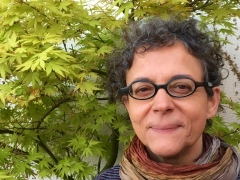 14/03/2024, 09:45 — 10:00 — Sala P3.10, Pavilhão de Matemática Online
14/03/2024, 09:45 — 10:00 — Sala P3.10, Pavilhão de Matemática Online
Lina Oliveira & Rosário Oliveira, Instituto Superior Técnico
What if our data were intervals?
Principal Component Analysis is a long-established approach to dimensionality reduction of conventional data. Naturally, dimensionality reduction techniques are also of value in the context of interval-valued symbolic data. In this talk, we discuss briefly the challenges and solutions of a mathematical approach to interval principal components.
Ver também
09H45_LO_h.pdf
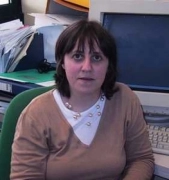 14/03/2024, 09:30 — 09:45 — Sala P3.10, Pavilhão de Matemática Online
14/03/2024, 09:30 — 09:45 — Sala P3.10, Pavilhão de Matemática Online
Conceição Amado, Instituto Superior Técnico
Using Big data to estimate precision, degradation, errors and costs of water customer meters
The scarcity of potable water, along with the escalating phenomenon of climate change, is currently an urgent problem to solve. Controlling apparent losses, which refer to the water lost inside the water distribution system and does not reach customers, is of utmost significance. This study, conducted in partnership with Baseform, seeks to enhance understanding of this topic.
In collaboration with Baseform
Ver também
09H30_CA.pdf
